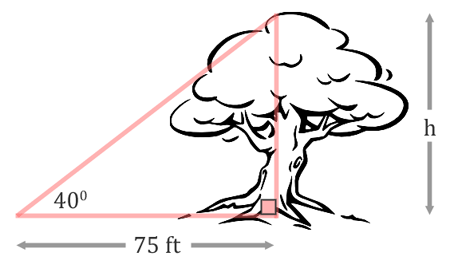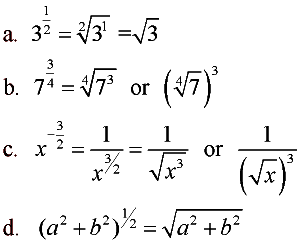TRIGONOMETRY 4.1
The New Chapter we started is consisted of what makes up a triangle to its angles and in relation with its sides.
Day 1 we learned to obey the SOH CAH TOA ritual to help us with remember what to use.
As S=Sine C=Cosine T=Tan
O= Opposite The opposite of the angle which it is faced
H=Hypotenuse The Slanting side which is the largest of the 3 sides, and always against the 90* angle.
A= AdjacentThe Side next to the opposite and always countered against the Hypotenuse.
As for example in Sine, we use Opposite/Hypotenuse to get the desired angle.

There’s also the Trigonometry ratios, which consists of the SOH CAH TOA rule aswell,
~~~~~~~~~~~~~~~~~~~~~~~~~~~~~~~~~~~~~~~~~~~~~~~~~~~~~~~~~~~~~~~~~~~~~~~~~~~~~~~~~~~~~~~~~~~~~~~~~~~~~~

for ex: we want to find the height, which in this case is the opposite, because it’s across from the working angle=40*
So we would use Tangent, since we want to use the Opposite/Adjacent.
Tan40*=Opposite/75ft
Opposite=tan40*75ft
Opposite=62.9ft
Working Backwards
We can also work backwards from this stance, if we have tanX=62.9/75
tanX=62.9/75
tanX=0.84
X=0.84*(Tan-) Tan negative is what we click on the calculator to find the angle.
X=40*
We can also find the Hypotenuse, whether it’s using Pythagoras or simply continuing to use Trigonometry
Simply Shifting to towards using Cosine which implements the Adjacent/Hypotenuse can give find us any of the two. The most important key is to fill use where the application is best fitted.
So we would use Cos40*=75/H
Cos40*=75/H
H=75/(Cos40*) Always figure out the cos of 40 first
H=75/0.77
H=97.4ft
Conclusion: Using SOH CAH TOA in the correct application will give you the right answer. But it must be the right application.
Sine= Opposite/Hypotenuse Cosine=Adjacent/ Hypotenuse Tangent=Opposite/Adjacent
~~~~~~~~~~~~~~~~~~~~~~~~~~~~~~~~~~~~~~~~~~~~~~~~~~~~~~~~~~~~~~~~~~~~~~~~~~~~~~~~~~~~~~~~~~~~~~~~~~~~~~



 as the surface area is 4piRsquared
as the surface area is 4piRsquared






